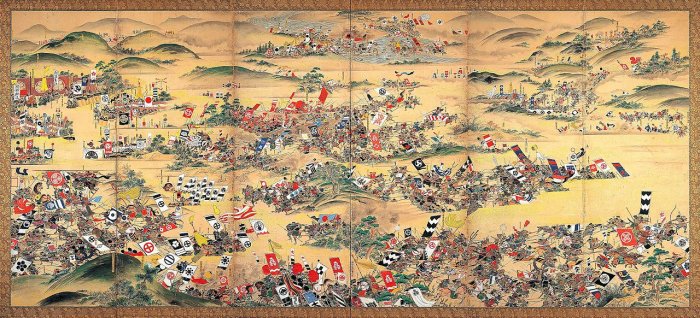Secrets Of The Japanese Shirasaya Sword Mounting
Rafael - AncientPages.com - The samurai warriors considered the sword as part of their soul. In this case, we can assume that the sword blade is the heart of a classic nihonto. All the other parts that make up the sword are secondary to the blade; yet on a finely-mounted sword, the sword’s fittings complement, enhance, and allows the blade to be functional.
Left: A fully functional Japanese Shirasaya Wakizashi Ninjato. Credit: Katanas For Sale - Right: Samurai warrior. Credit: Public Domain
There are two mounts that are well known as the Koshirae and Shirasaya, Koshirae refers to a traditional mount with fitting and proper to wrap with samegawa, while the Shirasaya is known as a plain scabbard which is used to store a blade that is not being used for a long period of time.
The Shirasaya
The shirasaya is an extremely popular mount that generally translates to the white scabbard. It is often made up of a hilt and is commonly crafted using a special kind of wood called the nurizaya however can be made from different wood types. The handle is also made of the same wood as the Saya, making it an unsuitable choice when it comes to battle-oriented blades. A sword with Shirasaya mount should not be used for battle or cutting as it lacks handguard and proper non-slippery grip.
This piece features a simple and rather designless exterior, save for its mekugi ana which helps secure the nakago. There were times when the sayagaki existed on the shirasaya.
You’re probably wondering why specialized storage is necessary for the blade despite having a saya. Thing is, this type of storage is vital for prolonged koshirae mounting since it could harm the blade. The reason for this is that lacquered wood retains moisture, thus, encourages corrosion. The shirasaya is also necessary since it is usually tightly fitted to prevent dirt, air, and dust from coming in contact with the sword’s blade. While the shirasaya’s exterior remained unadorned, there were instances when it featured text describing the type of blade within the saya.
Purpose Of The Shirasaya
Japanese swordsmiths commonly used a shirasaya mount when the sword is not expected to be used on the battlefield or for practice. And especially when it was going to be stored for a long period of time.
The shirasaya was a sword mounting that was not designed for combat. This was because it lacked a tsuba and because of this, shirasaya was never used on the battlefield. However, there have been similar mountings to the shirasaya. One of these included the shikomizue.
Although the shirasaya and the shikomizue may seem similar in appearance, these do not have the same purpose. These are both unadorned, but unlike the shirasaya, the shikomizue is designed to conceal the blade. It usually resembles a cane that can be used as a walking stick. Its mounting can also be used to conceal other types of weapons including hooks that are often used by the ninja.
The shirasaya can be used with any form of blade, it has become highly popular for various types of swords like Tanto and Wakizashi.
First Invention Of The Shirasaya
Experts believe that the first creation of the shirasaya was during the Edo period (1603-1868 AD). This can be true since this was the period when the government first imposed laws that prohibited the carrying of weapons in public. During this time, the government was aiming to establish peace throughout Japan by imposing laws on the samurai class. However, they believed that this would bring rise to the conflict between the different clans. This resulted in the restriction of carrying swords in public, which is why individuals who owned swords needed storage that would still keep their weapons protected from damages.
Edo-period screen depicting the Battle of Sekigahara. It began on 21 October 1600 with a total of 160,000 men facing each other. Credit: Public Domain
Since the swords did not see any use during this period, the samurai had to store these in sheaths that would keep their weapons protected from the country's harsh climate which may cause the swords to acquire rust and corrosion.
Honoki For The Shirasaya
Honoki is the type of traditional Japanese wood used for making tsuka and saya. Since this wood belongs to the magnolia family, it is considered as hardwood.
There are a few reasons why Japanese craftsmen opted for the honoki as the ideal wood for a saya. First, it doesn't contain acid or resin which can cause oxidation of the blade. Second, it was easy to carve and file this into shape. Third, the type of material also does not easily scratch blades. Most importantly, it was a stable and water-resistant type of wood. Even when exposed to humidity, the honoki does not warp over time.
Aside from not containing acid or resin, honoki is also the ideal type of wood for the shirasaya since this does not retain moisture, unlike lacquered wood. Moisture can eventually cause the blade’s corrosion when stored for a long period of time.
The Modern Shirasaya
As mentioned earlier, the shirasaya can be used with any type of blade. This is why a lot of collectibles can be found today and these come as sets with two or three differently sized swords. Other manufacturers also craft different sizes.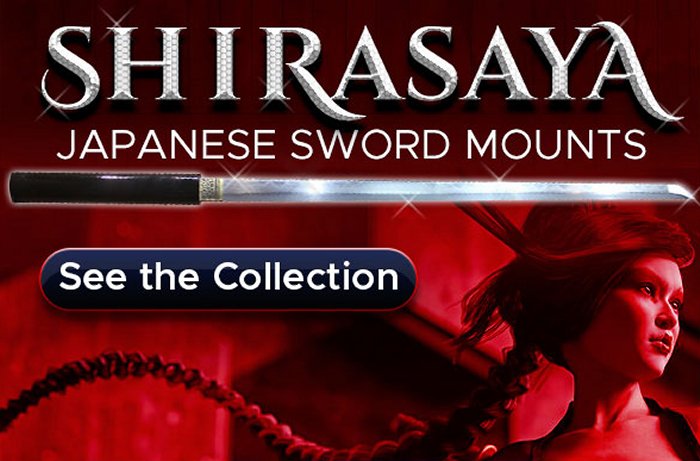
When it comes to modern shirasaya, some of these are made from bamboo while others are made from various types of visually appealing wood. Compared to the traditional shirasaya that is plain, modern replicas are elaborately designed. This is to make it a beautiful and attractive display piece.
The Shirasaya In Popular Culture
Popular culture most likely contributed to the growing popularity of the shirasaya. Just like a lot of Japanese weapons, this was featured in various TV series and films. The shirasaya was featured in the Japanese movie called Zatoichi which became a hit in the United States. Other movies also featured characters wielding the shirasaya, and these have most probably been inspired by the film.
In these movies, the battling style used when wielding the shirasaya was similar to fencing. The shirasaya was held in one hand and some modern popular shows have demonstrated the use of this weapon. A couple of these well-known shows include the Lady Snowblood and its sequel, as well as the anime series Naruto and D. Gray-Man.
Written by – Rafael - AncientPages.com Contributor
Copyright © AncientPages.com All rights reserved. This material may not be published, broadcast, rewritten or redistributed in whole or part without the express written permission of AncientPages.com
More From Ancient Pages
-
 How The Handbook ‘Hammer Of Witches’ And Then-Existing Networks Inspired Europe’s Witch Craze
Social Sciences | Oct 10, 2024
How The Handbook ‘Hammer Of Witches’ And Then-Existing Networks Inspired Europe’s Witch Craze
Social Sciences | Oct 10, 2024 -
 Unknown Biological Entities And Disturbing Weather Phenomenon In Washington Still Baffle Scientists
Featured Stories | Jul 23, 2019
Unknown Biological Entities And Disturbing Weather Phenomenon In Washington Still Baffle Scientists
Featured Stories | Jul 23, 2019 -
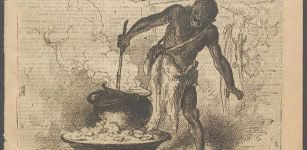 Obeah: Who Were The Feared Shadow Killers Of Jamaica?
Ancient Traditions And Customs | Sep 24, 2018
Obeah: Who Were The Feared Shadow Killers Of Jamaica?
Ancient Traditions And Customs | Sep 24, 2018 -
 Ancient Egyptian Guide To Rostau – The Underworld Of God Osiris May Be World’s Oldest Illustrated Book
Archaeology | Jan 2, 2020
Ancient Egyptian Guide To Rostau – The Underworld Of God Osiris May Be World’s Oldest Illustrated Book
Archaeology | Jan 2, 2020 -
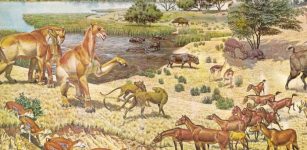 Horses In Florida Did Not Travel Far Distances – New Study Suggests
Archaeology | Jan 3, 2019
Horses In Florida Did Not Travel Far Distances – New Study Suggests
Archaeology | Jan 3, 2019 -
 Collapse Of Ancient Mayan Capital Linked To Drought – New Study Suggests
Archaeology | Aug 20, 2022
Collapse Of Ancient Mayan Capital Linked To Drought – New Study Suggests
Archaeology | Aug 20, 2022 -
 Six Ancient Giant Stone Spheres Recovered From The Diquís Delta, Costa Rica
Archaeology | Apr 7, 2022
Six Ancient Giant Stone Spheres Recovered From The Diquís Delta, Costa Rica
Archaeology | Apr 7, 2022 -
 Deciphered Ancient Cuneiform Tablets Reveal Locations Of Long-Lost Cities And Shed Light On The Secrets Of Mesopotamia
Places | Oct 20, 2024
Deciphered Ancient Cuneiform Tablets Reveal Locations Of Long-Lost Cities And Shed Light On The Secrets Of Mesopotamia
Places | Oct 20, 2024 -
 ‘Joyeuse’ – Legendary Sword With Relics Of Saints Was A Private Treasure Of Emperor Charlemagne
Artifacts | Dec 24, 2021
‘Joyeuse’ – Legendary Sword With Relics Of Saints Was A Private Treasure Of Emperor Charlemagne
Artifacts | Dec 24, 2021 -
 Something Strange Happened To Our Ancestors 900,000 Years Ago – Genetic Study Reveals
DNA | Sep 1, 2023
Something Strange Happened To Our Ancestors 900,000 Years Ago – Genetic Study Reveals
DNA | Sep 1, 2023 -
 New Archaeological Discoveries In The Temple Of Khnum At Esna, Luxor
Archaeology | Dec 29, 2022
New Archaeological Discoveries In The Temple Of Khnum At Esna, Luxor
Archaeology | Dec 29, 2022 -
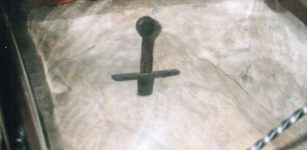 Mystery Of The Real Sword: How Did A Meter Long Sword End Up In Solid Rock?
Artifacts | Apr 15, 2019
Mystery Of The Real Sword: How Did A Meter Long Sword End Up In Solid Rock?
Artifacts | Apr 15, 2019 -
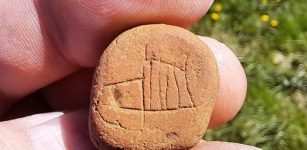 Small Stone Carved With A Viking Ship May Be Oldest Picture Ever Found In Iceland
Archaeology | Jun 16, 2023
Small Stone Carved With A Viking Ship May Be Oldest Picture Ever Found In Iceland
Archaeology | Jun 16, 2023 -
 The Magnificent Yule Goat In Gävle, Sweden Has Finally Arrived
Christmas Traditions | Dec 2, 2024
The Magnificent Yule Goat In Gävle, Sweden Has Finally Arrived
Christmas Traditions | Dec 2, 2024 -
 Legend Of The Blue Men Of Minch: Were They Mythological Creatures Or Real Men?
Featured Stories | May 13, 2016
Legend Of The Blue Men Of Minch: Were They Mythological Creatures Or Real Men?
Featured Stories | May 13, 2016 -
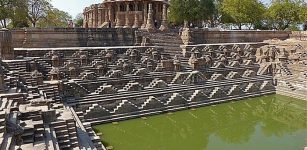 Ancient Stepwells Of India: Symbol Of Sacred Water And Boundary Between Heaven And Earth
Civilizations | Jan 11, 2019
Ancient Stepwells Of India: Symbol Of Sacred Water And Boundary Between Heaven And Earth
Civilizations | Jan 11, 2019 -
 Mythical Underground Labyrinth And Legendary Long-Lost Golden Tomb Found In Italy?
Featured Stories | Nov 21, 2024
Mythical Underground Labyrinth And Legendary Long-Lost Golden Tomb Found In Italy?
Featured Stories | Nov 21, 2024 -
 Gryla: Cannibalistic, Evil Troll And Her Sons ‘Yule Lads’ – In Icelandic Folklore
Christmas Traditions | Dec 23, 2024
Gryla: Cannibalistic, Evil Troll And Her Sons ‘Yule Lads’ – In Icelandic Folklore
Christmas Traditions | Dec 23, 2024 -
 Siberian Neanderthals Were Intrepid Nomads – They Started Their Journey In Eastern Europe
Archaeology | Jan 29, 2020
Siberian Neanderthals Were Intrepid Nomads – They Started Their Journey In Eastern Europe
Archaeology | Jan 29, 2020 -
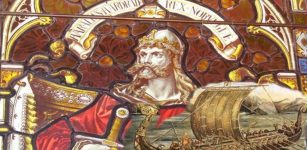 On This Day In History: The Battle Of Fulford – King Hardrada Against Saxon Troops – Was Fought – On Sep 20, 1066
News | Sep 20, 2016
On This Day In History: The Battle Of Fulford – King Hardrada Against Saxon Troops – Was Fought – On Sep 20, 1066
News | Sep 20, 2016


